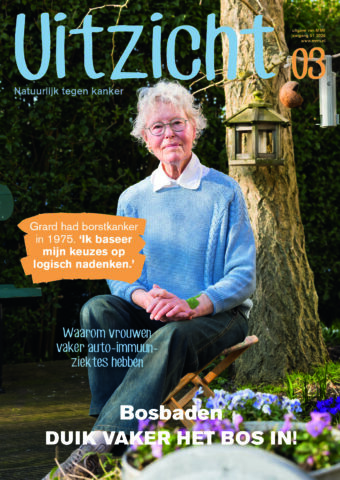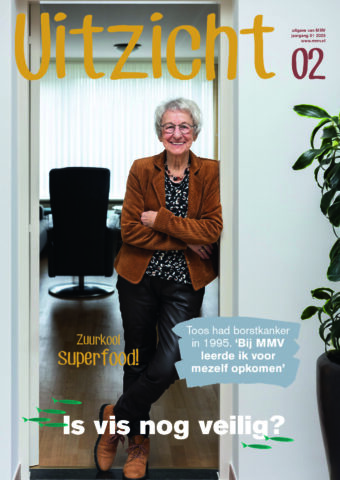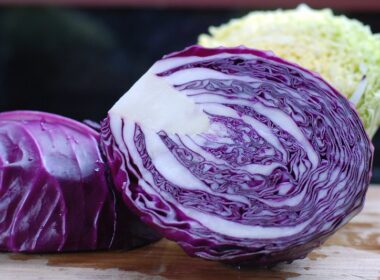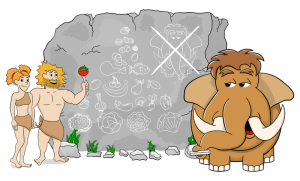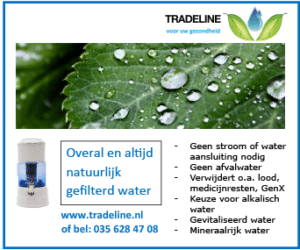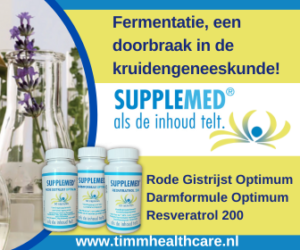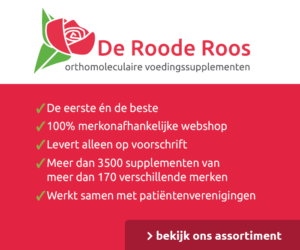Huidkanker in een blanke huid neemt over de hele wereld toe (1-3) met de zon als boosdoener. In Australië is de angst voor melanoom zo groot dat de bevolking massaal een tekort aan vitamine-D opliep. Is binnen blijven voortaan het devies?
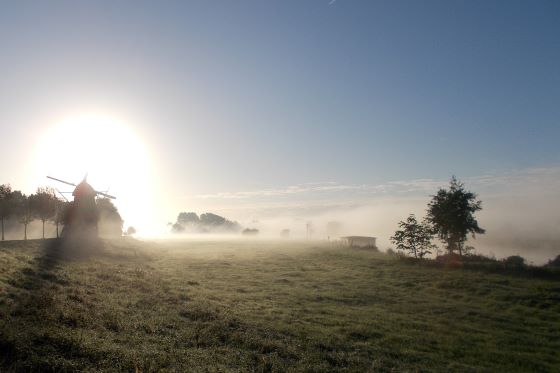
Huidkanker in een blanke huid neemt over de hele wereld toe (1-3) met de zon als boosdoener. In Australië is de angst voor melanoom zo groot dat de bevolking massaal een tekort aan vitamine-D opliep. Is binnen blijven voortaan het devies?
Bij overvloedige blootstelling aan de zon verbrandt iedere huid. Als roodharige ben je het eerst aan de beurt, een zwarte huid verbrandt het laatst (4). Verbranding is een onmiskenbare risicofactor voor huidkanker (5,6). Het gaat om basaalcel-carcinoom, plaveiselcel-carcinoom en het kwaadaardige melanoom. Bij zonblootstelling ontstaat een gigantisch aantal mutaties in de huid, maar ons lichaam ruimt het overgrote deel gelukkig direct weer op (7-9). Naast verbranding en kanker vormt overvloedige zonblootstelling ook een risico op schade aan het immuunsysteem (10-13), de ogen, vroegtijdige veroudering van de huid en zonneallergie (12). UV kan bovendien virussen activeren die zich in ons DNA nestelden, zoals het papillomavirus (HPV; 14). HPV wordt aangetroffen in meer dan de helft van de melanomen (14).
De mensheid is geëvolueerd met de zon. Die kan dus niet alleen maar schadelijk zijn. De zon straalt reeds sinds het ontstaan van onze aarde; zo’n 4,54 miljard jaar geleden (15). Het ultraviolette deel kent drie varianten: UVA, UVB en UVC. UVC bereikt de aarde niet door de ozonlaag. Door blootstelling aan UVB maken we in de huid vitamine D en ontstaat melanine dat ons beschermt tegen de zon (16-18). Melanine voorkomt verbranding en beschermt tegen het verlies van folaat (vitamine B11) (19,20) en tegen huidkanker. Een lichte huidskleur zorgt ervoor dat ook bij een lage UVB-intensiteit nog vitamine D kan worden aangemaakt (21). In de zomerzon is een witte huid echter een nadeel. Dat zie je wanneer bleke landgenoten als geroosterde pinda’s terugkeren uit de Costa del Sol.
Ongeveer 75 procent van de huidmelanomen bevindt zich op plaatsen die het daglicht nagenoeg nooit zien
De zon bevordert ook de hartgezondheid. Bij matige blootstelling daalt de bloeddruk, verhoogt de polsfrequentie en bij topsporters verlaagt de zuurstofbehoefte (22-25). Onze huid maakt in de zon allerlei stoffen aan (26,27), waaronder beta-endorfine (28-31) dat in de hersenen een lekker ‘verslavend’ gevoel geeft (26,30). Zonlicht kan ook pijn verlichten (32,33) en virussen gedijen slecht onder invloed van de zon (34). Wat opvalt is dat melanomen meer voorkomen bij mensen die binnen zitten dan bij mensen die buiten werken (1,14,35,36). Ongeveer 75 procent van de huid melanomen bevindt zich op plaatsen die het daglicht nagenoeg nooit zien (37-39).
Binnen blijven lijkt daarom niet aan te raden. En zo min mogelijk achter glas (40). Glas laat namelijk wel UVA door, maar geen UVB (1). En dan wordt in de huid noch melanine noch vitamine D aangemaakt, terwijl vitamine D wel afbreekt. Dit zou verklaren waarom piloten en stewardessen vaker melanoom hebben (14). En ook waarom in landen waar de bestuurder links in de auto zit meer huidkanker op de linkerkant van het lichaam voorkomt, en bij landen waar men rechts zit precies andersom (41).
Teveel UVA en te weinig vitamine D in de huid tekenen zich steeds sterker af als belangrijke oorzaken van melanoom (14,37). Verbetering van de vitamine D-status vermindert waarschijnlijk het risico (42-44). Dat het aantal gevallen van melanoom sterk groeit, komt waarschijnlijk vanwege meer alertheid en verbeterde screening, want het sterftecijfer bleef gelijk (45).
Hoewel de zon de schijn tegen heeft, gaat het (weer eens) om balans (35,46). Aan de ene kant een afdoende vitamine D-status (80 nmol/L is prachtig), een natuurlijke zomerteint, een goede stemming en bescherming tegen hart- en vaatziektes. Aan de andere kant het verstandig omgaan met de risico’s van schade aan het immuunsysteem, vroegtijdige veroudering en huidkanker. Onder alle omstandigheden is het belangrijk verbranding te voorkomen met een zonnebrandcrème die zowel een UVB- als een UVA-filter bevat (35,47). En denk ook aan een zonnehoed.
Godar DE, Landry RJ, Lucas AD. Increased UVA exposures and decreased cutaneous Vitamin D(3) levels may be responsible for the increasing incidence of melanoma. Med Hypotheses. 2009 Apr;72(4):434-43. doi: 10.1016/j.mehy.2008.09.056. Epub 2009 Jan 19. PMID: 19155143.
https://pubmed.ncbi.nlm.nih.gov/19155143/
2. Godar DE. Worldwide increasing incidences of cutaneous malignant melanoma. J Skin Cancer. 2011;2011:858425. doi: 10.1155/2011/858425. Epub 2011 Oct 10. PMID: 22007306; PMCID: PMC3191827.
https://pubmed.ncbi.nlm.nih.gov/22007306/
3. Reichrath J, Reichrath S. Hope and challenge: the importance of ultraviolet (UV) radiation for cutaneous vitamin D synthesis and skin cancer. Scand J Clin Lab Invest Suppl. 2012;243:112-9. doi: 10.3109/00365513.2012.682876. PMID: 22536771.
https://pubmed.ncbi.nlm.nih.gov/22536771/
4. Guerra KC, Urban K, Crane JS. Sunburn. 2020 Nov 20. In: StatPearls [Internet]. Treasure Island (FL): StatPearls Publishing; 2021 Jan–. PMID: 30521258.
https://pubmed.ncbi.nlm.nih.gov/30521258/
5. Dennis LK, Vanbeek MJ, Beane Freeman LE, Smith BJ, Dawson DV, Coughlin JA. Sunburns and risk of cutaneous melanoma: does age matter? A comprehensive meta-analysis. Ann Epidemiol. 2008 Aug;18(8):614-27. doi: 10.1016/j.annepidem.2008.04.006. PMID: 18652979; PMCID: PMC2873840.
https://pubmed.ncbi.nlm.nih.gov/18652979/
6. Braun HA, Adler CH, Goodman M, Yeung H. Sunburn frequency and risk and protective factors: a cross-sectional survey. Dermatol Online J. 2021 Apr 15;27(4):13030/qt6qn7k2gp. PMID: 33999575.
https://pubmed.ncbi.nlm.nih.gov/33999575/
7. Marteijn JA, Lans H, Vermeulen W, Hoeijmakers JH. Understanding nucleotide excision repair and its roles in cancer and ageing. Nat Rev Mol Cell Biol. 2014 Jul;15(7):465-81. doi: 10.1038/nrm3822. PMID: 24954209.
https://pubmed.ncbi.nlm.nih.gov/24954209/
8. Vermeij WP, Hoeijmakers JH, Pothof J. Aging: not all DNA damage is equal. Curr Opin Genet Dev. 2014 Jun;26:124-30. doi: 10.1016/j.gde.2014.06.006. Epub 2014 Sep 15. PMID: 25222498.
https://pubmed.ncbi.nlm.nih.gov/25222498/
9. Kciuk M, Marciniak B, Mojzych M, Kontek R. Focus on UV-Induced DNA Damage and Repair-Disease Relevance and Protective Strategies. Int J Mol Sci. 2020 Oct 1;21(19):7264. doi: 10.3390/ijms21197264. PMID: 33019598; PMCID: PMC7582305.
https://pubmed.ncbi.nlm.nih.gov/33019598/
10. Sepkoski JJ Jr. Ten years in the library: new data confirm paleontological patterns. Paleobiology. 1993 Winter;19(1):43-51. doi: 10.1017/s0094837300012306. PMID: 11538041.
https://pubmed.ncbi.nlm.nih.gov/11538041/
11. Dinkova-Kostova AT. Phytochemicals as protectors against ultraviolet radiation: versatility of effects and mechanisms. Planta Med. 2008 Oct;74(13):1548-59. doi: 10.1055/s-2008-1081296. Epub 2008 Aug 11. PMID: 18696411.
https://pubmed.ncbi.nlm.nih.gov/18696411/
12. Maverakis E, Miyamura Y, Bowen MP, Correa G, Ono Y, Goodarzi H. Light, including ultraviolet. J Autoimmun. 2010 May;34(3):J247-57. doi: 10.1016/j.jaut.2009.11.011. Epub 2009 Dec 16. PMID: 20018479; PMCID: PMC2835849.
https://pubmed.ncbi.nlm.nih.gov/20018479/
13. Dixon KM, Tongkao-On W, Sequeira VB, Carter SE, Song EJ, Rybchyn MS, Gordon-Thomson C, Mason RS. Vitamin D and death by sunshine. Int J Mol Sci. 2013 Jan 18;14(1):1964-77. doi: 10.3390/ijms14011964. PMID: 23334476; PMCID: PMC3565359.
https://pubmed.ncbi.nlm.nih.gov/23334476/
14. Merrill SJ, Ashrafi S, Subramanian M, Godar DE. Exponentially increasing incidences of cutaneous malignant melanoma in Europe correlate with low personal annual UV doses and suggests 2 major risk factors. Dermatoendocrinol. 2015 Feb 27;7(1):e1004018. doi: 10.1080/19381980.2014.1004018. PMID: 26413188; PMCID: PMC4579973.
https://pubmed.ncbi.nlm.nih.gov/26413188/
15. “Age of the Earth”. U.S. Geological Survey (USGS). 1997. Archived from the original on 23 December 200
https://pubs.usgs.gov/gip/geotime/age.html
16. Oren M, Bartek J. The sunny side of p53. Cell. 2007 Mar 9;128(5):826-8. doi: 10.1016/j.cell.2007.02.027. PMID: 17350568.
https://pubmed.ncbi.nlm.nih.gov/17350568/
17. Gilchrest BA. Sun exposure and vitamin D sufficiency. Am J Clin Nutr. 2008 Aug;88(2):570S-577S. doi: 10.1093/ajcn/88.2.570S. PMID: 18689404.
https://pubmed.ncbi.nlm.nih.gov/18689404/
18. Mohania D, Chandel S, Kumar P, Verma V, Digvijay K, Tripathi D, Choudhury K, Mitten SK, Shah D. Ultraviolet Radiations: Skin Defense-Damage Mechanism. Adv Exp Med Biol. 2017;996:71-87. doi: 10.1007/978-3-319-56017-5_7. PMID: 29124692.
https://pubmed.ncbi.nlm.nih.gov/29124692/
19. Jablonski NG. The evolution of human skin pigmentation involved the interactions of genetic, environmental, and cultural variables. Pigment Cell Melanoma Res. 2021 Apr 7. doi: 10.1111/pcmr.12976. Epub ahead of print. PMID: 33825328.
https://pubmed.ncbi.nlm.nih.gov/33825328/
20. Branda RF, Eaton JW. Skin color and nutrient photolysis: an evolutionary hypothesis. Science. 1978 Aug 18;201(4356):625-6. doi: 10.1126/science.675247. PMID: 675247.
https://pubmed.ncbi.nlm.nih.gov/675247/
21. Chen TC, Chimeh F, Lu Z, Mathieu J, Person KS, Zhang A, Kohn N, Martinello S, Berkowitz R, Holick MF. Factors that influence the cutaneous synthesis and dietary sources of vitamin D. Arch Biochem Biophys. 2007 Apr 15;460(2):213-7. doi: 10.1016/j.abb.2006.12.017. Epub 2007 Jan 8. PMID: 17254541; PMCID: PMC2698590.
https://pubmed.ncbi.nlm.nih.gov/17254541/
22. Watson K. HUMAN PHOTOSYNTHESIS – BEYOND VITAMIN-D November 2, 2014; Updated on December 7, 2019 by Afifah Hamilton
23. Feelisch M, Kolb-Bachofen V, Liu D, Lundberg JO, Revelo LP, Suschek CV, Weller RB. Is sunlight good for our heart? Eur Heart J. 2010 May;31(9):1041-5. doi: 10.1093/eurheartj/ehq069. Epub 2010 Mar 9. PMID: 20215123.
https://pubmed.ncbi.nlm.nih.gov/20215123/
24. Liu D, Fernandez BO, Hamilton A, Lang NN, Gallagher JMC, Newby DE, Feelisch M, Weller RB. UVA irradiation of human skin vasodilates arterial vasculature and lowers blood pressure independently of nitric oxide synthase. J Invest Dermatol. 2014 Jul;134(7):1839-1846. doi: 10.1038/jid.2014.27. Epub 2014 Jan 20. PMID: 24445737.
https://pubmed.ncbi.nlm.nih.gov/24445737/
25. Weller RB. Sunlight Has Cardiovascular Benefits Independently of Vitamin D. Blood Purif. 2016;41(1-3):130-4. doi: 10.1159/000441266. Epub 2016 Jan 15. PMID: 26766556.
https://pubmed.ncbi.nlm.nih.gov/26766556/
26. Holick MF. Biological Effects of Sunlight, Ultraviolet Radiation, Visible Light, Infrared Radiation and Vitamin D for Health. Anticancer Res. 2016 Mar;36(3):1345-56. PMID: 26977036.
https://pubmed.ncbi.nlm.nih.gov/26977036/
27. Gorman S, Black LJ, Feelisch M, Hart PH, Weller R. Can skin exposure to sunlight prevent liver inflammation? Nutrients. 2015 May 5;7(5):3219-39. doi: 10.3390/nu7053219. PMID: 25951129; PMCID: PMC4446748.
https://pubmed.ncbi.nlm.nih.gov/25951129/
28. Oren M, Bartek J. The sunny side of p53. Cell. 2007 Mar 9;128(5):826-8. doi: 10.1016/j.cell.2007.02.027. PMID: 17350568.
https://pubmed.ncbi.nlm.nih.gov/17350568/
29. Tran TT, Schulman J, Fisher DE. UV and pigmentation: molecular mechanisms and social controversies. Pigment Cell Melanoma Res. 2008 Oct;21(5):509-16. doi: 10.1111/j.1755-148X.2008.00498.x. PMID: 18821855; PMCID: PMC2733367.
https://pubmed.ncbi.nlm.nih.gov/18821855/
30. Fell GL, Robinson KC, Mao J, Woolf CJ, Fisher DE. Skin β-endorphin mediates addiction to UV light. Cell. 2014 Jun 19;157(7):1527-34. doi: 10.1016/j.cell.2014.04.032. PMID: 24949966; PMCID: PMC4117380.
https://pubmed.ncbi.nlm.nih.gov/24949966/
31. Tejeda HA, Bonci A. Shedding “UV” light on endogenous opioid dependence. Cell. 2014 Jun 19;157(7):1500-1. doi: 10.1016/j.cell.2014.06.009. PMID: 24949960.
https://pubmed.ncbi.nlm.nih.gov/24949960/
32. Walch JM, Rabin BS, Day R, Williams JN, Choi K, Kang JD. The effect of sunlight on postoperative analgesic medication use: a prospective study of patients undergoing spinal surgery. Psychosom Med. 2005 Jan-Feb;67(1):156-63. doi: 10.1097/01.psy.0000149258.42508.70. PMID: 15673638.
https://pubmed.ncbi.nlm.nih.gov/15673638/
33. Juzeniene A, Moan J. Beneficial effects of UV radiation other than via vitamin D production. Dermatoendocrinol. 2012 Apr 1;4(2):109-17. doi: 10.4161/derm.20013. PMID: 22928066; PMCID: PMC3427189.
https://pubmed.ncbi.nlm.nih.gov/22928066/
34. Moriyama M, Hugentobler WJ, Iwasaki A. Seasonality of Respiratory Viral Infections. Annu Rev Virol. 2020 Sep 29;7(1):83-101. doi: 10.1146/annurev-virology-012420-022445. Epub 2020 Mar 20. PMID: 32196426.
https://pubmed.ncbi.nlm.nih.gov/32196426/
35. Sepkoski JJ Jr. Ten years in the library: new data confirm paleontological patterns. Paleobiology. 1993 Winter;19(1):43-51. doi: 10.1017/s0094837300012306. PMID: 11538041.
https://pubmed.ncbi.nlm.nih.gov/11538041/
36. Watson M, Holman DM, Maguire-Eisen M. Ultraviolet Radiation Exposure and Its Impact on Skin Cancer Risk. Semin Oncol Nurs. 2016 Aug;32(3):241-54. doi: 10.1016/j.soncn.2016.05.005. Epub 2016 Jul 29. PMID: 27539279; PMCID: PMC5036351.
https://pubmed.ncbi.nlm.nih.gov/27539279/
37. Godar DE, Subramanian M, Merrill SJ. Cutaneous malignant melanoma incidences analyzed worldwide by sex, age, and skin type over personal Ultraviolet-B dose shows no role for sunburn but implies one for Vitamin D3. Dermatoendocrinol. 2016 Dec 14;9(1):e1267077. doi: 10.1080/19381980.2016.1267077. PMID: 28924456; PMCID: PMC5400110.
https://pubmed.ncbi.nlm.nih.gov/28924456/
38. Crombie IK. Distribution of malignant melanoma on the body surface. Br J Cancer. 1981 Jun;43(6):842-9. doi: 10.1038/bjc.1981.123. PMID: 7248161; PMCID: PMC2010705.
https://pubmed.ncbi.nlm.nih.gov/7248161/
39. Rivers JK. Is there more than one road to melanoma? Lancet. 2004 Feb 28;363(9410):728-30. doi: 10.1016/S0140-6736(04)15649-3. PMID: 15005091.
https://pubmed.ncbi.nlm.nih.gov/15005091/
40. Webb AR, DeCosta BR, Holick MF. Sunlight regulates the cutaneous production of vitamin D3 by causing its photodegradation. J Clin Endocrinol Metab. 1989 May;68(5):882-7. doi: 10.1210/jcem-68-5-882. PMID: 2541158.
https://pubmed.ncbi.nlm.nih.gov/2541158/
41. Atkar R, Ocampo M, Euvrard S, McGregor J, Kanitakis J, Harwood C. Ultraviolet radiation exposure through window glass may be associated with localization of nonmelanoma skin cancer in organ transplant recipients: a study in France and the UK. Br J Dermatol. 2013 Aug;169(2):484-5. doi: 10.1111/bjd.12379. PMID: 23581291.
https://pubmed.ncbi.nlm.nih.gov/23581291/
42. Holick MF. Sunlight, UV Radiation, Vitamin D, and Skin Cancer: How Much Sunlight Do We Need? Adv Exp Med Biol. 2020;1268:19-36. doi: 10.1007/978-3-030-46227-7_2. PMID: 32918212.
https://pubmed.ncbi.nlm.nih.gov/32918212/
43. Reichrath J, Zouboulis CC, Vogt T, Holick MF. Targeting the vitamin D endocrine system (VDES) for the management of inflammatory and malignant skin diseases: An historical view and outlook. Rev Endocr Metab Disord. 2016 Sep;17(3):405-417. doi: 10.1007/s11154-016-9353-4. PMID: 27447175.
https://pubmed.ncbi.nlm.nih.gov/27447175/
44. Bikle DD. The Vitamin D Receptor as Tumor Suppressor in Skin. Adv Exp Med Biol. 2020;1268:285-306. doi: 10.1007/978-3-030-46227-7_14. PMID: 32918224.
https://pubmed.ncbi.nlm.nih.gov/32918224/
45. Welch HG, Mazer BL, Adamson AS. The Rapid Rise in Cutaneous Melanoma Diagnoses. N Engl J Med. 2021 Jan 7;384(1):72-79. doi: 10.1056/NEJMsb2019760. PMID: 33406334.
https://pubmed.ncbi.nlm.nih.gov/33406334/
46. Reichrath J, Nürnberg B. Cutaneous vitamin D synthesis versus skin cancer development: The Janus faces of solar UV-radiation. Dermatoendocrinol. 2009 Sep;1(5):253-61. doi: 10.4161/derm.1.5.9707. PMID: 20808512; PMCID: PMC2836430.
https://pubmed.ncbi.nlm.nih.gov/20808512/
47. Glaser KS, Tomecki KJ. Sunscreens in the United States: Current Status and Future Outlook. Adv Exp Med Biol. 2020;1268:355-379. doi: 10.1007/978-3-030-46227-7_18. PMID: 32918228.
MMV maakt wekelijks een selectie uit het nieuws over voeding en leefstijl in relatie tot kanker en andere medische condities.
Inschrijven nieuwsbrief

